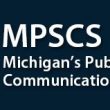Avian deaths threaten tower design
A Michigan study to determine what causes migratory birds to collide fatally with communications towers could impact the time and money necessary to erect and maintain wireless networks nationwide.
Environmentalists and the U.S. Fish and Wildlife Service [USFWS] long have claimed that 4 million to 50 million birds die each year in collisions with communications towers, but critics contend such estimates are based more on anecdotal evidence rather than scientific studies.
But better estimates of the number of birds that die annually as a result of collisions with communications towers is just a piece of Michigan’s $200,000 study, which is examining a portion of the towers that comprise the statewide 800 MHz network completed in 2001 for the Michigan Department of State Police. More importantly, researchers hope to discover which tower architectures — in terms of height, lighting and structure — are safest for migratory birds.
“Hopefully, this will help all tower builders — government and commercial — discover the scope of the problem and what might be done to minimize it,” said John Clark, state police counsel and a member of the law firm of Perkins Coie.
Funded by the state of Michigan, the study is being conducted as a condition of a memorandum of understanding between the state, the USFWS and the Federal Communications Commission, in an effort to resolve a longstanding dispute: the FCC allegedly licensed the state of Michigan to build the network of about 180 towers without conducting the required environmental assessment.
On current FCC license applications, the form includes a check box that applicants are supposed to use to tell the agency whether building the network would have an environmental impact, according to John Kostyak, senior counsel for the National Wildlife Federation. On its application, the Michigan state police checked that it would not, something the FCC is supposed to confirm independently, he said.
“The law is pretty clear. You are supposed to get an environmental assessment of the expert agency — in this case, the U.S. Fish and Wildlife Service — before constructing towers,” Kostyak said. “That step was completely missed.”
Actually, USFWS documents indicate that a Michigan state police representative called the agency to get a list of endangered species, but there was no follow-up communications after the list was delivered to the state, said Al Manville, a wildlife biologist in the migratory bird division of USFWS. This circumstance makes the state’s actions appear even more suspect, Kostyak said.
“It’s almost as if they went out of their way to avoid the [environmental] process,” he said.
In this case, the state police erected towers in the middle of the habitat of one of the nation’s “most endangered birds,” the Kirtland’s warbler, of which there are less than 1000 males in existence, Kostyak said. Had an environmental assessment been conducted, there could have been changes in the lighting, height and location of some towers to mitigate dangers to the warbler and other migratory birds, he said.
But it’s uncertain whether following such recommendations would improve the birds’ plight, said Clark, who noted the state police worked closely with the Michigan Department of Natural Resources on environmental issues before constructing the network. Because most avian mortality studies related to towers were done in the 1960s and 1970s — primarily on broadcast towers that are more than 1000 feet, with few studies being conducted west of the Mississippi River — modern environmental assessments and related recommendations regarding wireless towers not only are inexact but perhaps also irrelevant.
“The science is lacking,” Clark said. “You end up writing a report that says, ‘We don’t think there is a problem, but we don’t know,’ because there’s not enough research on the subject.”
With this in mind, a new study was proposed. While Kostyak and other environmentalists continue to express frustration that an environmental-impact study is being conducted only after the Michigan state police communications network was built, Manville said it is time to “move forward” and expressed excitement at the prospect of new research in the area.
Started last fall as a pilot, the study will examine 17 differently configured towers in the Michigan network to determine which architectures are most dangerous to migratory birds. Separately, the FCC has finished receiving comments on a Notice of Inquiry regarding the subject and could issue a Notice of Proposed Rulemaking during the next several months, according to a source with the agency.
Conventional thinking has held that taller towers pose a greater risk to birds. Similarly, freestanding towers are believed to be safer than those supported by guy wires, which provide another potential hazard for birds flying at night. Finding out for sure is particularly important in Michigan, because the state police network includes many towers between 200 and 450 feet tall to maximize the coverage area, with some freestanding structures and some supported by guy wires.
In addition, the towers will be equipped with different styles of lighting — red or white bulbs, strobed or blinking — in an effort to determine whether that also has an impact.
The pilot portion of the study has been completed, but details of the results are not being released at this time. However, Clark said the initial phase indicates not as many birds are dying in tower collisions as estimated.
“The fears of the environmental community have been that millions of birds per year are being killed by flying into towers,” he said. “The early indication is that the numbers are much lower than that.”
The main part of the study will focus on the spring and fall migration periods in 2004 and 2005. While other tower studies have been lengthier, they typically have studied only one or two towers in an area and primarily focused on counting the number of birds that die.
With its controlled scientific approach to determine the effects of height, lighting and guy wires on avian mortality, the Michigan study will be among the most comprehensive to date, according to Manville.
Kostyak is not completely sold on the study’s comprehensiveness, noting that less than 10% of the towers in the network will be observed.
“We’re worried that it’s not addressing everything,” Kostyak said. “In particular, it’s not looking at the Kirtland’s warbler.”
Most of those involved in the study believe its findings will be applicable throughout the country, although bird populations vary in different regions.
However, there’s a very real chance many of the resulting recommendations may conflict with the financial realities of building a wireless network, especially for budget-strapped governmental entities trying to erect towers for public-safety communications systems.
For instance, while different types of lighting do not vary much in cost, the expense associated with the additional steel necessary to erect a freestanding tower instead of one supported by guy wires can be significant.
In addition, a decision by the FCC to restrict the height of towers for environmental reasons could be a hardship on cities and counties with limited budgets. Typically, public-safety organizations utilize taller towers in their wireless networks to provide complete radio coverage to their personnel for the least cost, according to Association of Public-Safety Communications Officials President Vincent Stile.
“Nobody wants to put up a [tall] tower, but we’re forced to do that because of limited funds,” Stile said.
One environmental aspect not being studied in sufficient depth in Michigan is the specific locations of the tower sites, according to Kostyak, who sees the location of tower sites in the Kirtland’s warbler habitat as a primary concern. The issue could have been resolved with “minor modification” of the location of some towers, he said.
However, that’s not always as easy as it sounds. Not only can moving the site of a tower create a domino effect that causes the entire network design to be reconfigured, getting property rights to erect a tower remains problematic.
“That’s difficult sometimes,” said Stile, who also is police radio communications systems director for the Suffolk County Police Department in New York. “You can’t always get that site next to the [desired] tower location.”
Stile was adamant that public-safety organizations should follow rules protecting the environment, and all environmentalists interviewed for this story stressed they did not want to halt deployment of public-safety systems.
However, depending on what guidelines are adopted in the future, costs stemming from an unexpected re-engineering of a network design or the loss of construction time while environmental issues are debated could be a sticking point, especially if they are perceived as jeopardizing the safety of civilians or public-safety officers.
“It’s a ticklish situation … but prolonging an installation of a tower is a concern,” Stile said.
| ▪ No difference between red strobes, white strobes, and blinking red incandescent lights. | ▪No difference between towers of different heights. |
| ▪ Red incandescent lights are riskier than red strobes, which are riskier than white strobes | ▪Taller towers are riskier than shorter towers |
| ▪No difference between guyed and un-guyed towers. | ▪No difference between towers near shorelines and towers farther away. |
| ▪Guyed towers are riskier than un-guyed towers | ▪Towers closer to lakeshores are riskier than inland towers |
| Source: Michigan Avian Collision Study Plan | |
on the web:
For more information on the technology and business developments that are shaping the land mobile radio and private wireless markets, check out our Web site: WWW.IWCE-MRT.COM.COM

















